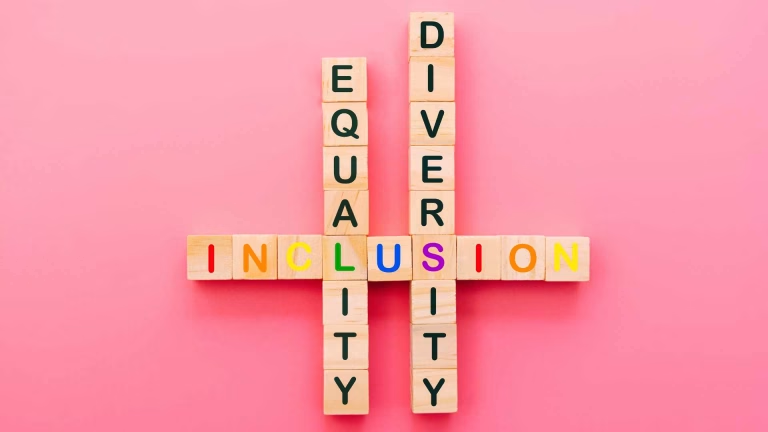We all want to build an “inclusive culture.” It’s a goal that appears in strategy documents and on job descriptions across purpose-led organisations and values-driven businesses. But what does it actually mean? How do we move it from a vague ambition to a daily reality?
An inclusive culture isn’t a mystery; it’s a structure. Like a well-designed building, it’s built on strong, distinct foundations. Inspired by my recent reading of the book “Build It” and its “Engagement Bridge” model, I’ve been reflecting on the core pillars that support a workplace where everyone can thrive.
In this article, we’ll explore three of those essential pillars.

Pillar 1: Shared Purpose & Lived Values – inclusive culture
A shared purpose is the “why” behind your work. For many purpose-led organisations, including my clients, this is a strength: you have a clear mission to make a positive impact on the world.
It’s about ensuring your internal reality also matches your external mission. If your organisation champions social responsibility in its marketing but fails to create a fair and supportive culture for its own team, a damaging gap appears. An inclusive purpose is one where every team member, from the front desk to the board room, can see themselves and their contribution valued within the organisation’s mission.
It’s also important to ensure you have clear values and that they are a lived reality for everyone within your organisation. Small moments matter, as they shape people’s experience of your organisation. These daily interactions are the ultimate test of your values; they are the moments that prove to your team whether your principles are just posters on a wall or the genuine, lived experience of your inclusive culture.
Ask your team:
- Does our organisation’s purpose feel true for everyone who works here?
- How can we better align our internal actions with our external values?
- Is there a gap between our proclaimed values and lived reality?

Pillar 2: Psychological Safety & Authentic Connection – inclusive culture
Psychological safety is the shared belief that it is safe to take interpersonal risks. It’s the freedom to speak up, ask a question, challenge an idea, or admit a mistake without fear of being shamed or penalised. For any ambitious organisation, this is not a “nice-to-have”, it is the absolute bedrock of innovation, collaboration, and courage.
Without inclusion, psychological safety is impossible. If team members from underrepresented backgrounds do not feel safe to voice their unique perspectives, you are not only failing them, but your organisation is also losing out on invaluable insights. Building this foundation of trust is some of the most critical work a leadership team can do. It’s essential to your inclusive culture.
Ask your team:
- When was the last time we had a healthy, constructive disagreement in a team meeting?
- Are dissent voices seen as valuable contributions, or a risky disruption?

Pillar 3: Equitable Growth & Fair Recognition – inclusive culture
This pillar is about the systems and processes that govern a person’s journey within your organisation. It’s the tangible proof that your culture is fair. It answers the questions: Who gets promoted? Who gets access to career-defining projects? Who gets access to training opportunities? Who is publicly praised for their work?
In a non-inclusive culture, these opportunities often fall to the same small group of people, while others, even with great talent, hit an invisible ceiling. This is not just unfair; it’s a primary reason why brilliant people (including from underrepresented backgrounds) leave organisations, taking their talent with them. True equity means having transparent and fair processes for everything from project allocation and pay rises to promotions and professional development.
Ask your Team:
- If we mapped out the last five high-profile opportunities in our organisation, who were they given to?
- Do we have a fair and transparent process for growth?
Building your culture, brick by brick
These pillars don’t appear by magic. They are the result of intentional, consistent effort, and that effort must be driven and modelled by leadership.
Building a truly inclusive culture is the most important work a leadership team can do. It’s complex, it’s challenging, and it requires a unified vision, with clear values.
If you are a leader ready to move from ambition to action, I run change programmes designed to give your team the tools and alignment to build these pillars together. Let’s book a call to discuss your organisation’s unique roadmap. In the meantime, you can always starts with my Free EDI audit, to understand your key areas of strengths and improvements.
Léa Guzzo – EDI consultant



